Netflix’s Bridgerton is a show full of beautiful and elaborate costumes, with colors that often tell surprising stories all on their own.
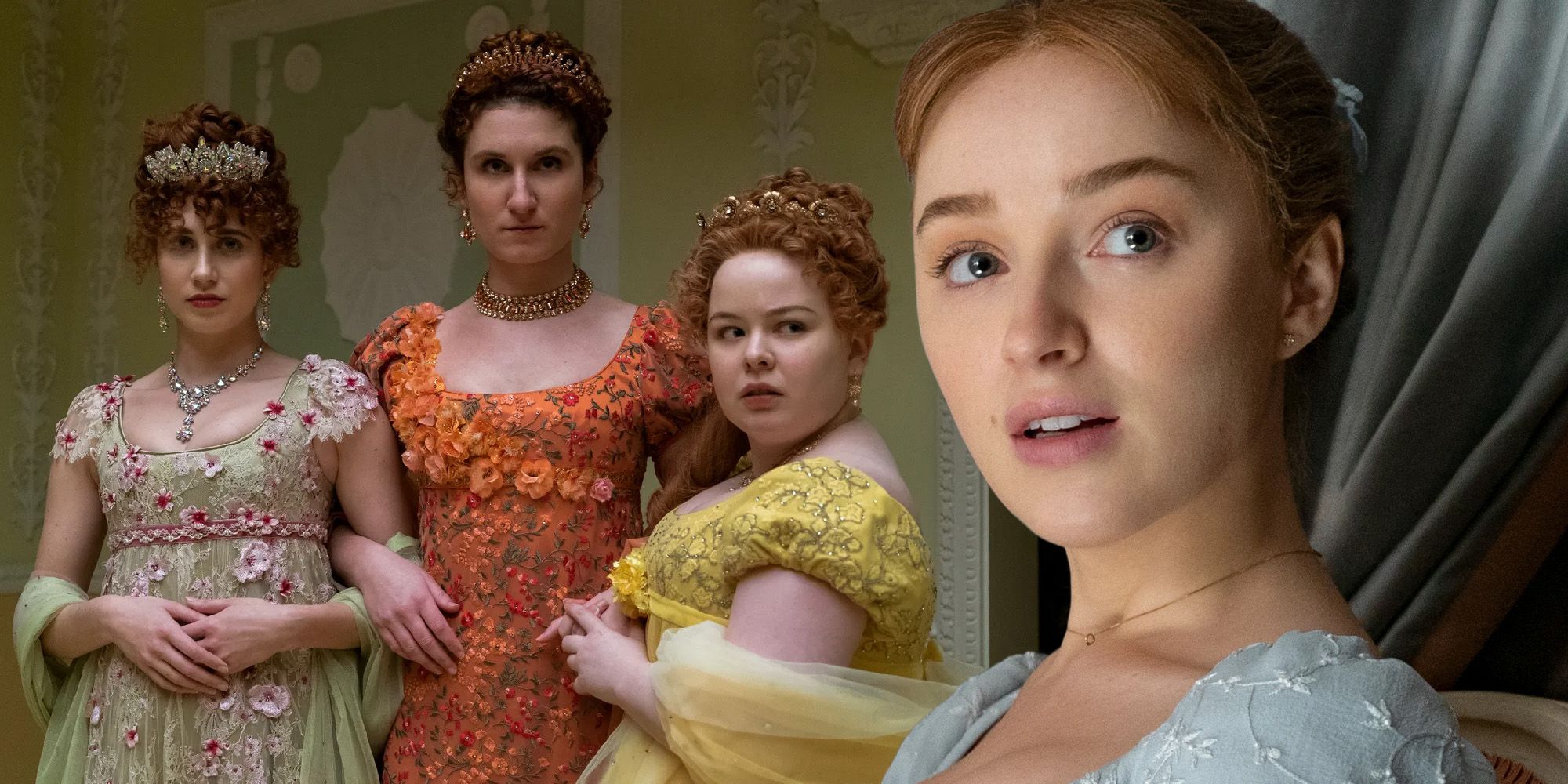
Bridgerton is a show full of beautiful and elaborate costumes with colors and designs that often tell stories of their own. The series, adapted from Julia Quinn’s novels and set during the Regency era, follows the Bridgerton family, specifically, their eight children, as they come of age and fall in love. Each season spotlights the romantic relationship of one Bridgerton siblings. Though the elegantly steamy period drama demands a level of attention and a sheer number of pieces to rival many of Netflix’s offerings, the series’ creators pull out all the stops to create some truly stunning wardrobe pieces.
Bridgerton’s use of color is incredibly important to the overall storytelling, allowing for already visually stunning sequences to crackle with additional resonance. It’s one small way in which Netflix’s adaptation of Julia Quinn’s beloved romance novels is enhanced by a smart, deliberate, and well-conceived preproduction process.
How Bridgerton Uses Color In Their Costuming
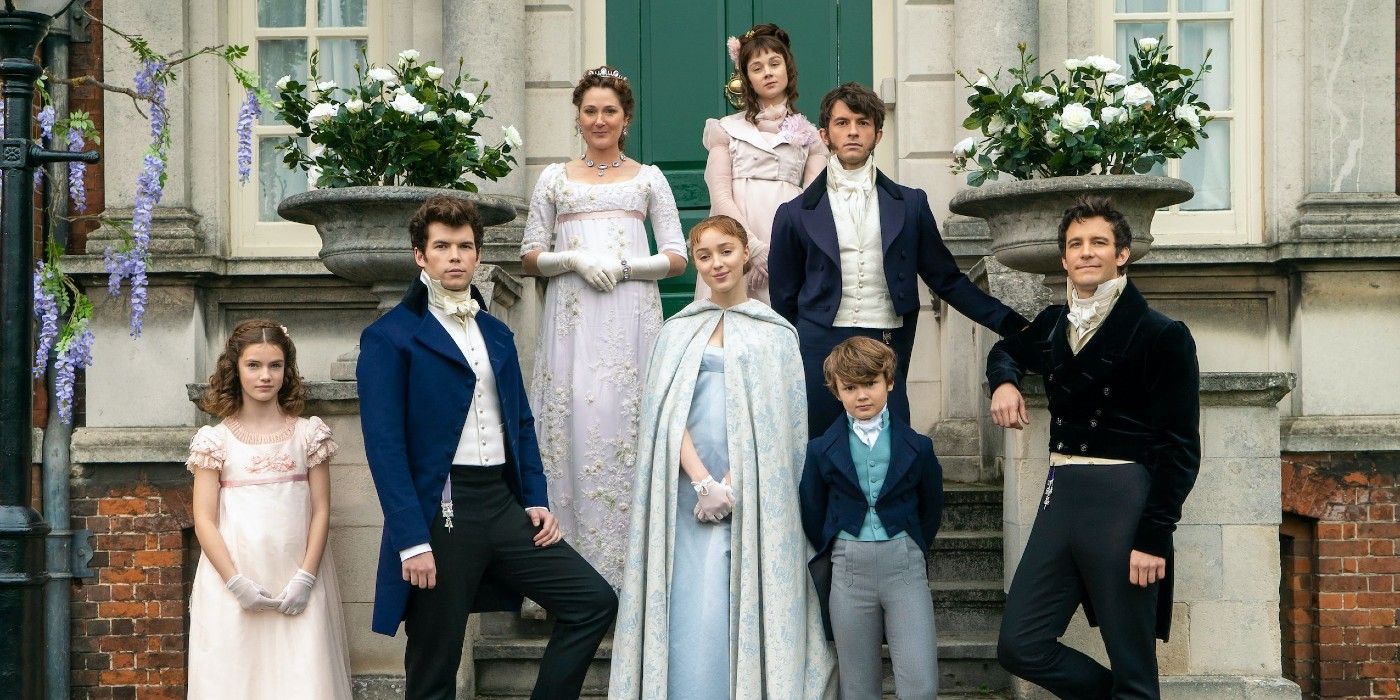
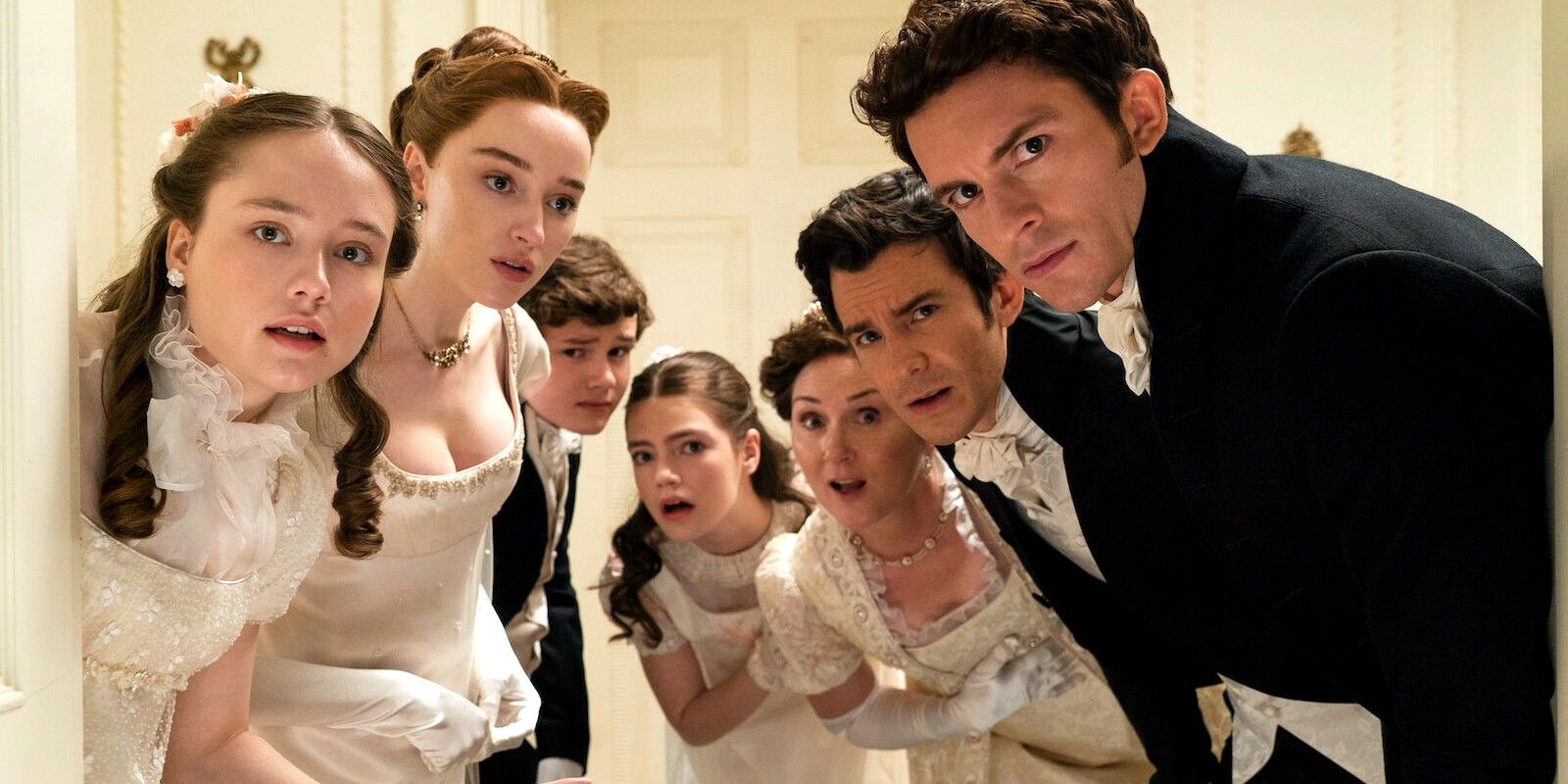
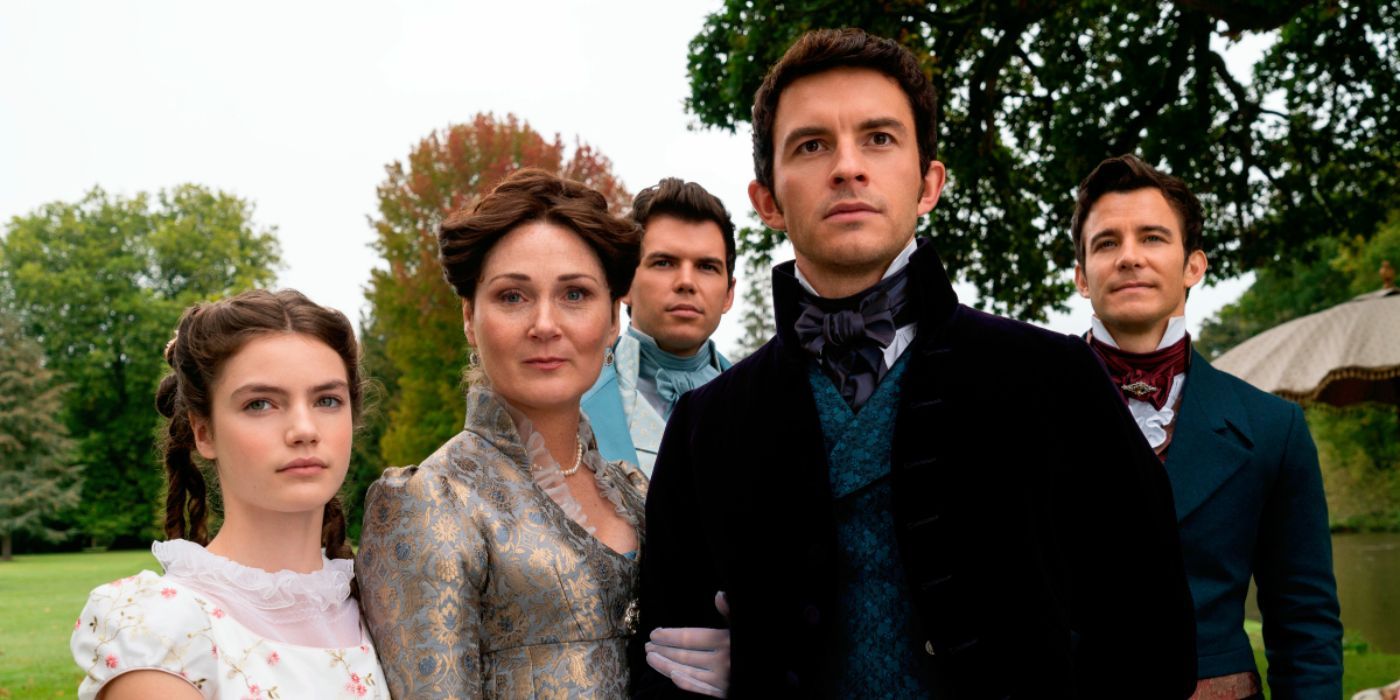
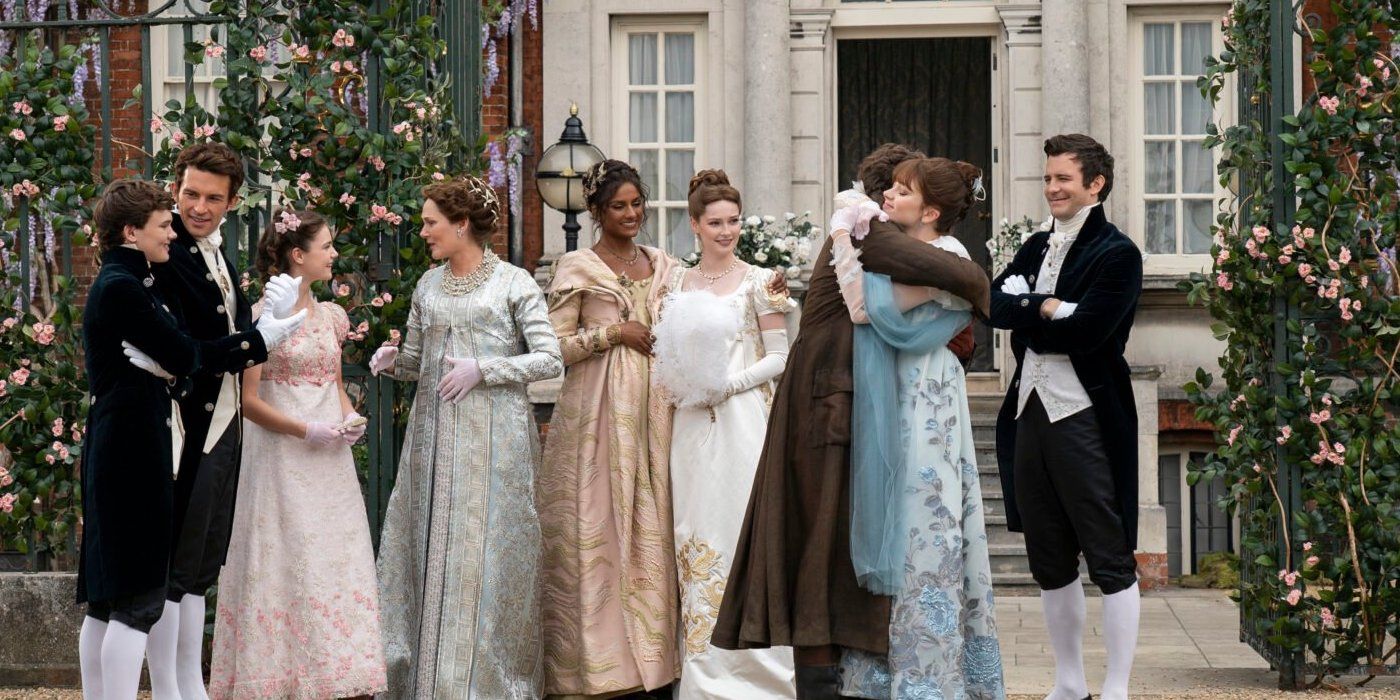
The Bridgerton family employs a very specific shade of blue…
In an interview with Town & Country, costume designer Ellen Mirojnick said of her unenviable task, “It’s the largest show I’ve ever done in my entire career, and the most fabulous show I’ve ever done in my entire career.” Yet, despite the challenges that came with fitting Bridgerton’s season 1 cast and a small army of extras, Mirojnick and her team excel, creating pieces that manage to provide a glimpse at the characters’ inner life and social position.
In essence, the symbolism provided by costume color serves as a nifty shorthand for a show exploring (and, in some cases, reimagining) Britain’s Regency Era, a time in which tradition and social norms so often kept people from verbally expressing themselves. As if that wasn’t enough, Bridgerton (set in the year 1813) manages to inject elements of more contemporary storytelling, bolstered in large part by mixing traditional and modern aesthetics, designs, and – of course – color palates.
For example, fans have been quick to notice what they call “Bridgerton blue” in the series, and while it’s true that the Bridgertons often wear blue, or incorporate it into the trim on coats or ribbon on dresses, most of the time, the Bridgerton family employs a very specific shade of blue. Production Designer Will Hughes-Jones informed Southern Living that the Bridgertons are often clad in Wedgewood blue. That particular shade was found in ceramics and fine china at the time, which helps to emphasize the Bridgerton family social status.
Why Penelope Wears Yellow
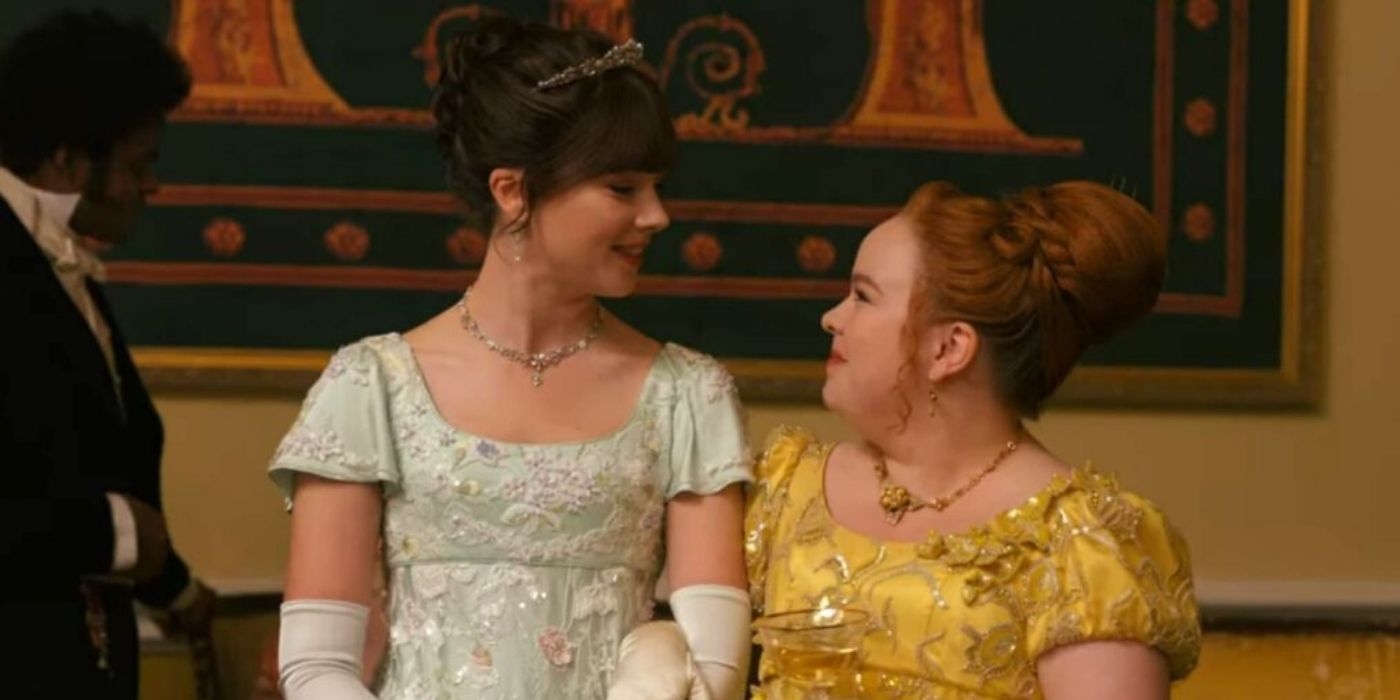
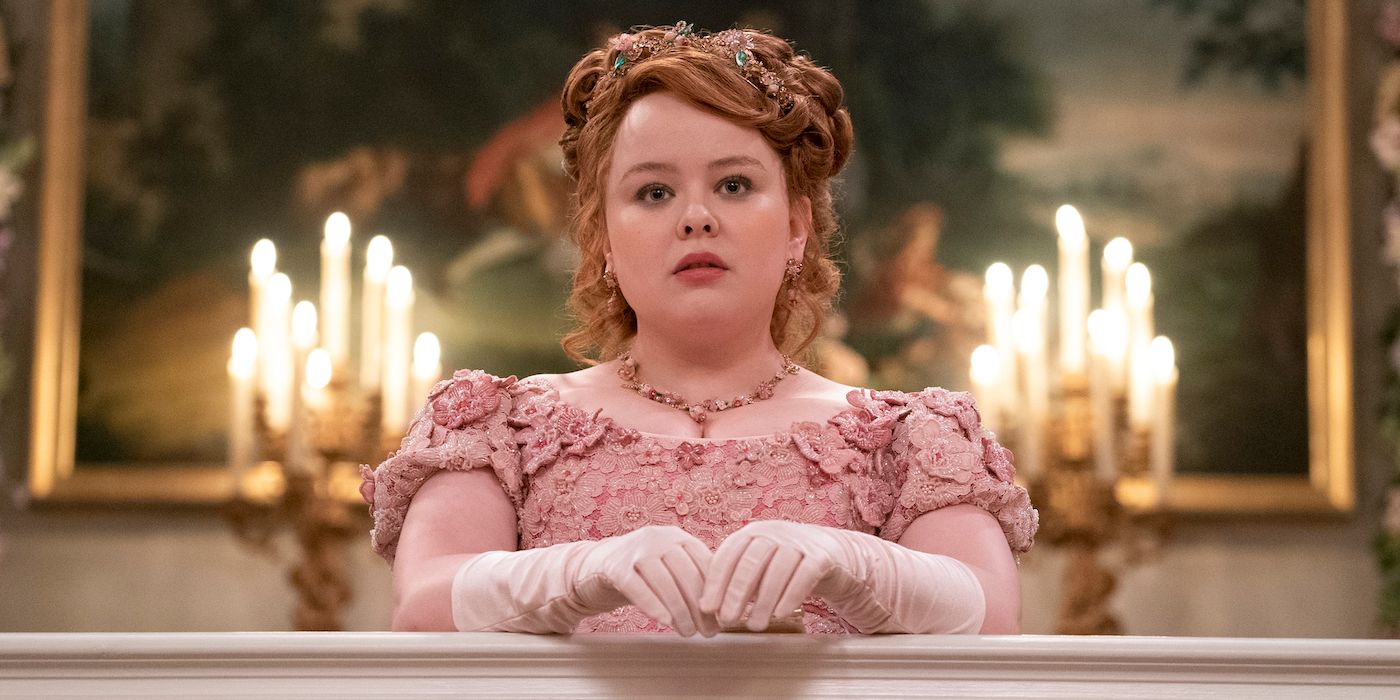
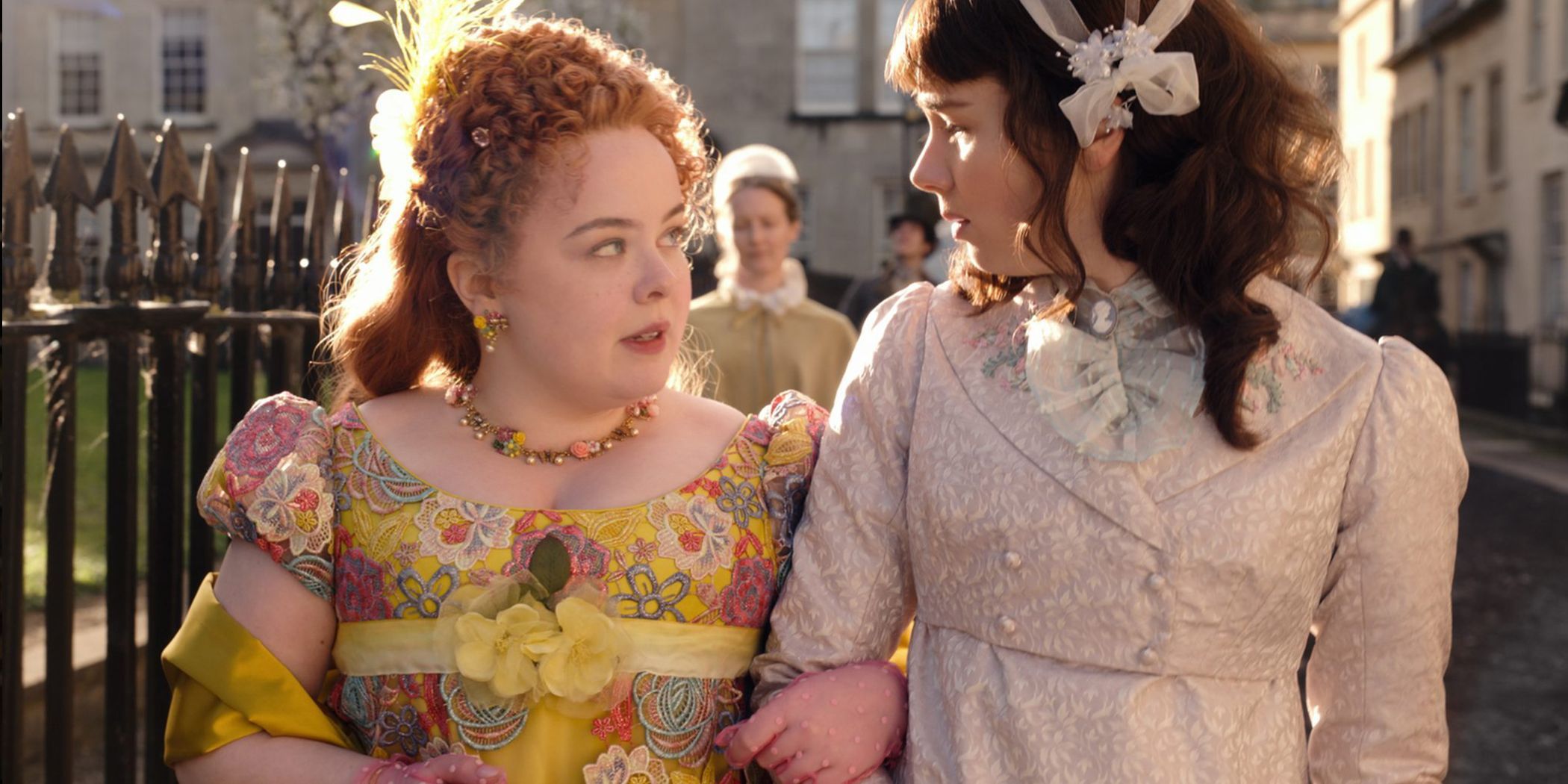
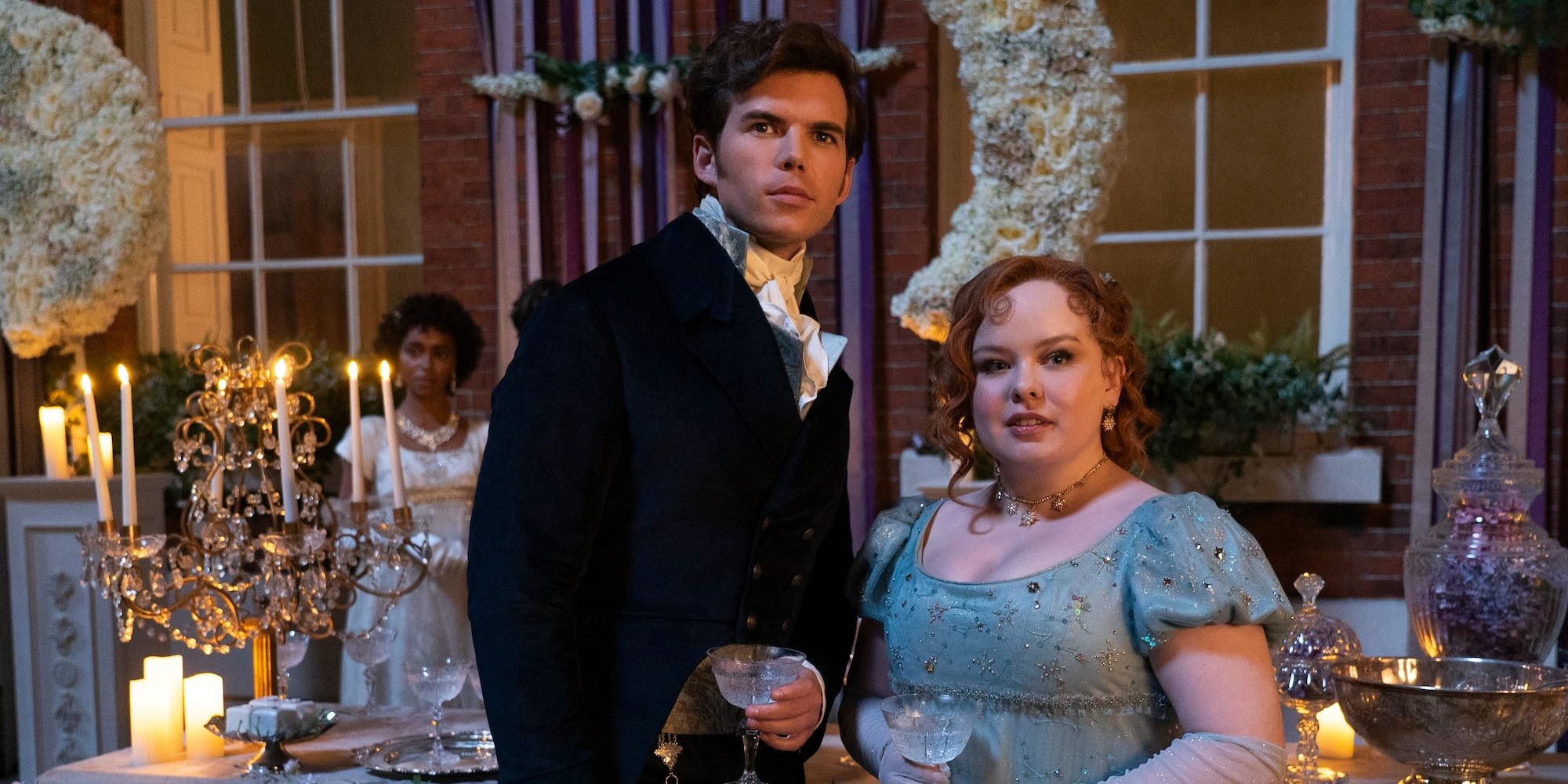
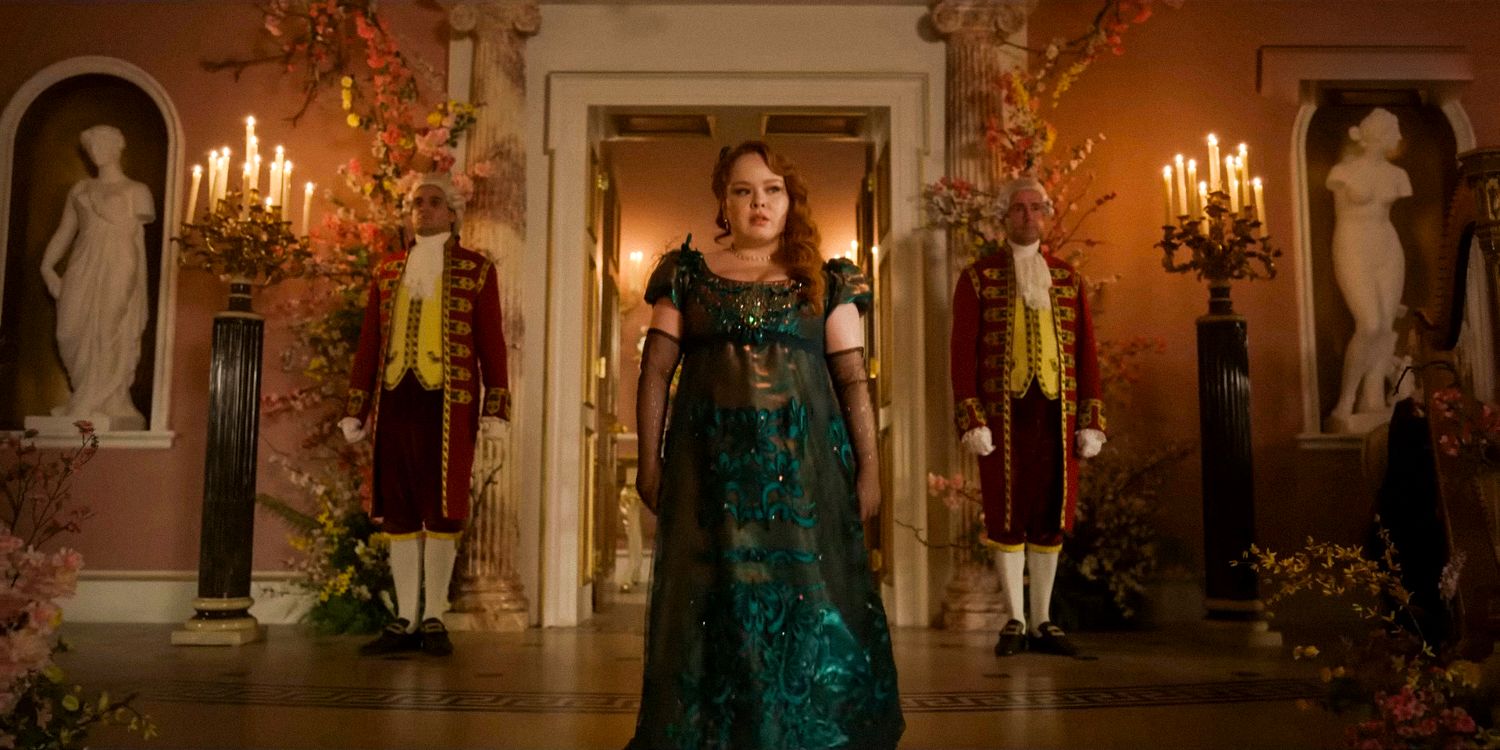
For nearly all of her Bridgerton appearances, Penelope wears yellow, a color that at first glance seems to reflect the character’s brightness and cheery nature. Although poor Pen humorously mentions her dislike of the color, in truth, yellow was an incredibly fashionable color of the Regency Era, often considered the most popular of those worn by marriage-seeking young women. The fact that Penelope remains fashionable despite her protestations could symbolize her true beauty and worth, even when she can’t see it herself. She does sometimes incorporate the pinks and oranges of the rest of the family as well.
Yellow also reflects deceit and envy, both of which relate to Penelope’s alter ego, Lady Whistledown. The youngest Featherington uses her considerable wit to obscure her identity, fooling her family, her truth-seeking best friend, and even the Queen’s investigators. A color signifying enlightenment, yellow also speaks to Pen’s unexpected worldliness and great ability to read others – a valuable skill she uses to great effect as Lady Whistledown.
Bridgerton season 3 sees Penelope move away from bright yellows and pinks to wear more greens and blues. Not only does this mean that she’s moving away from the control of her mother, but it also brings her closer in her color pallet to the Bridgerton family colors. The change is also in keeping with the novels, which see Penelope stop wearing yellow when her mother believes that Penelope is going to be a spinster forever and no longer cares to control her daughter’s wardrobe.
Why The Featheringtons Wear So Many Colors
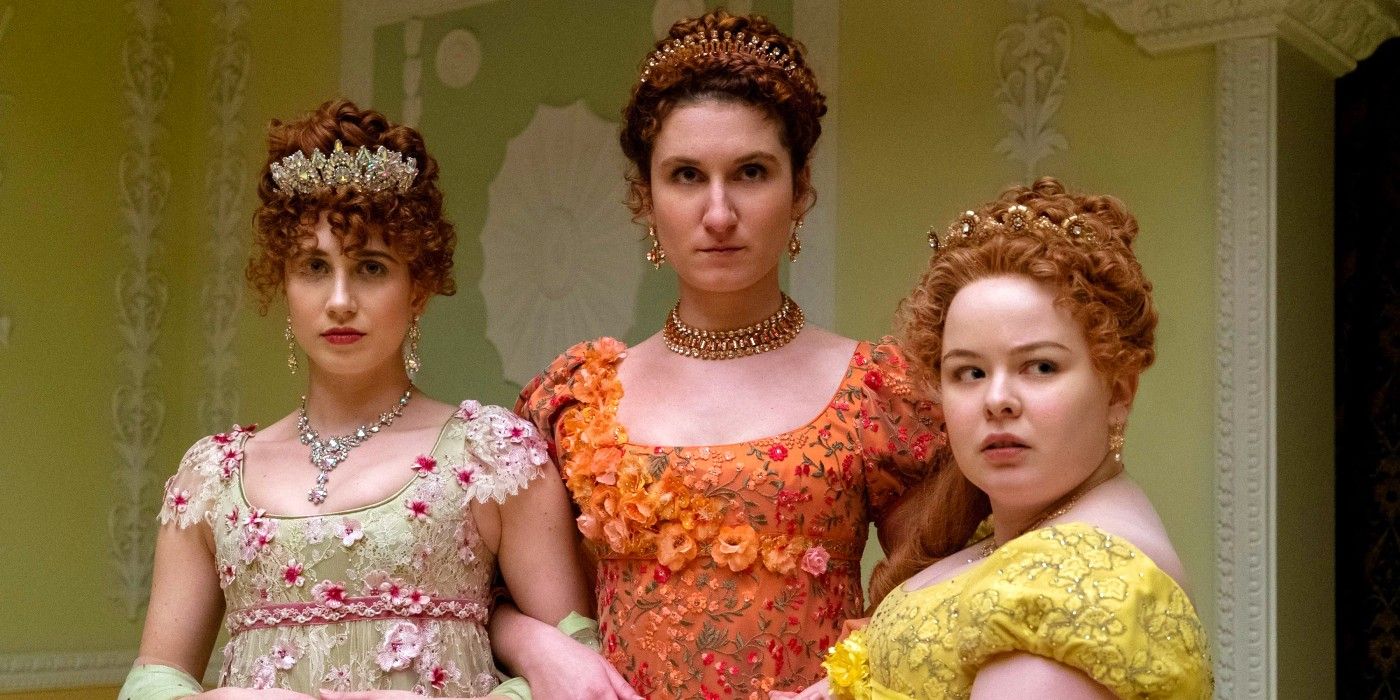
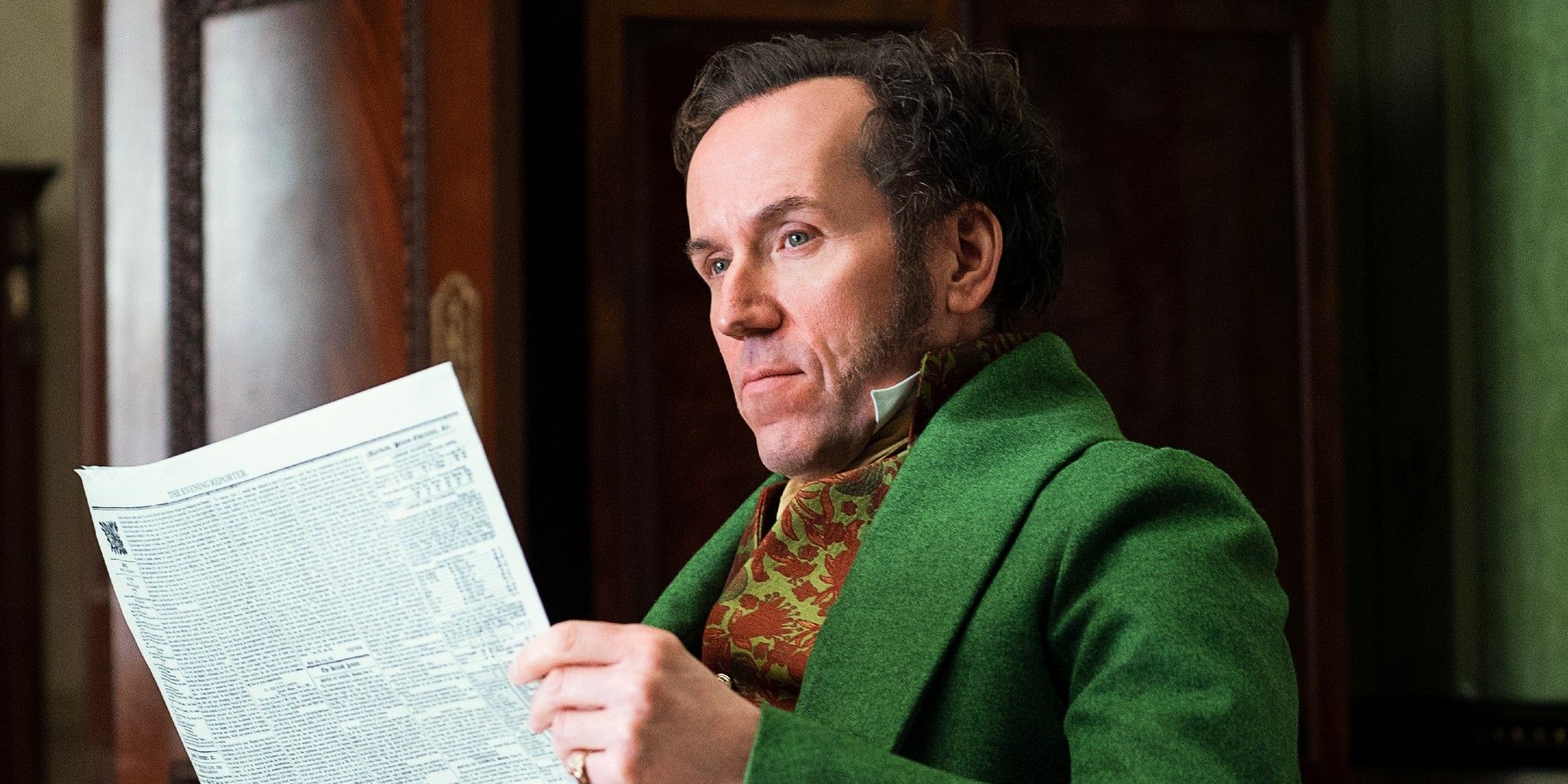
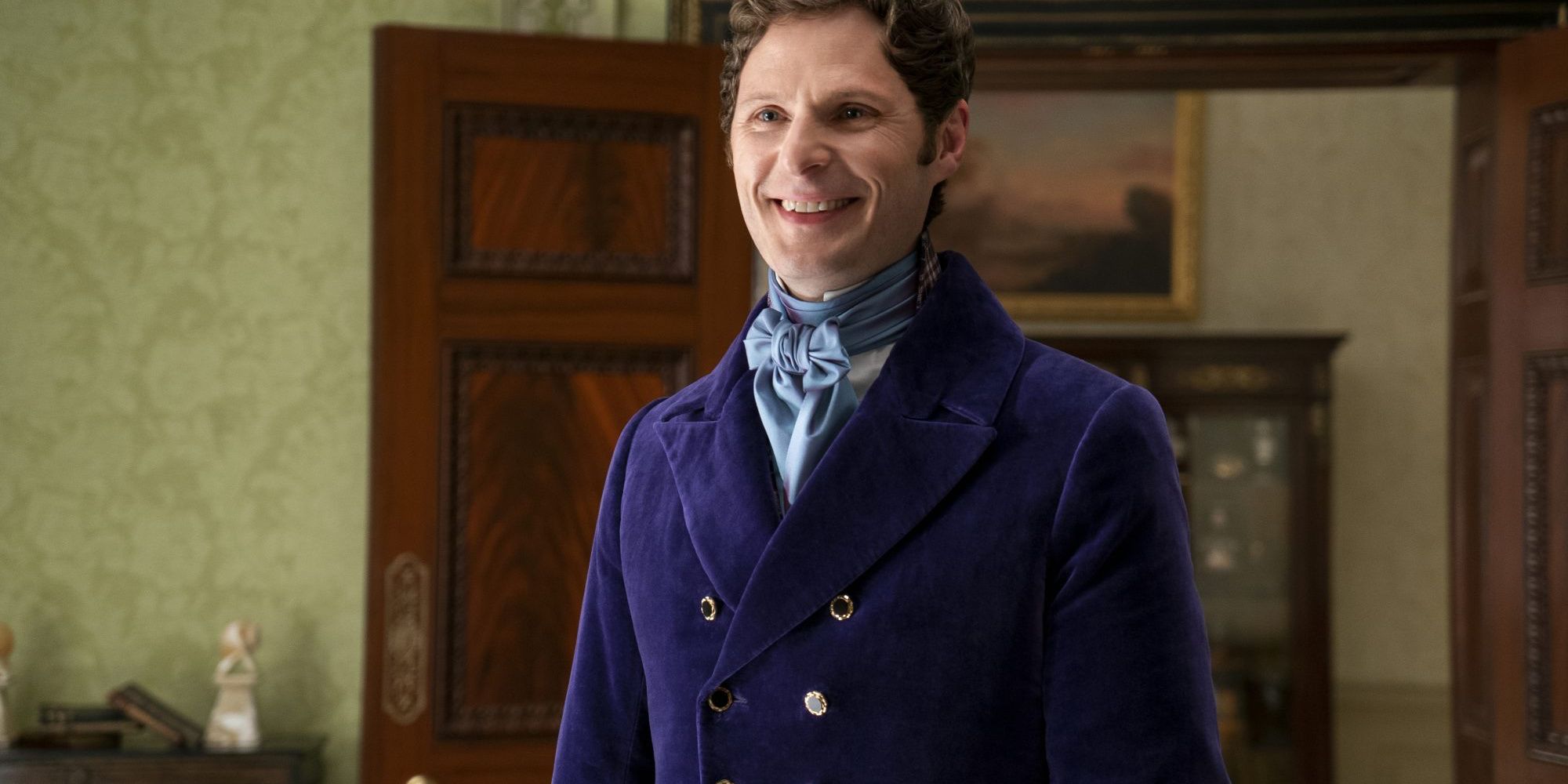
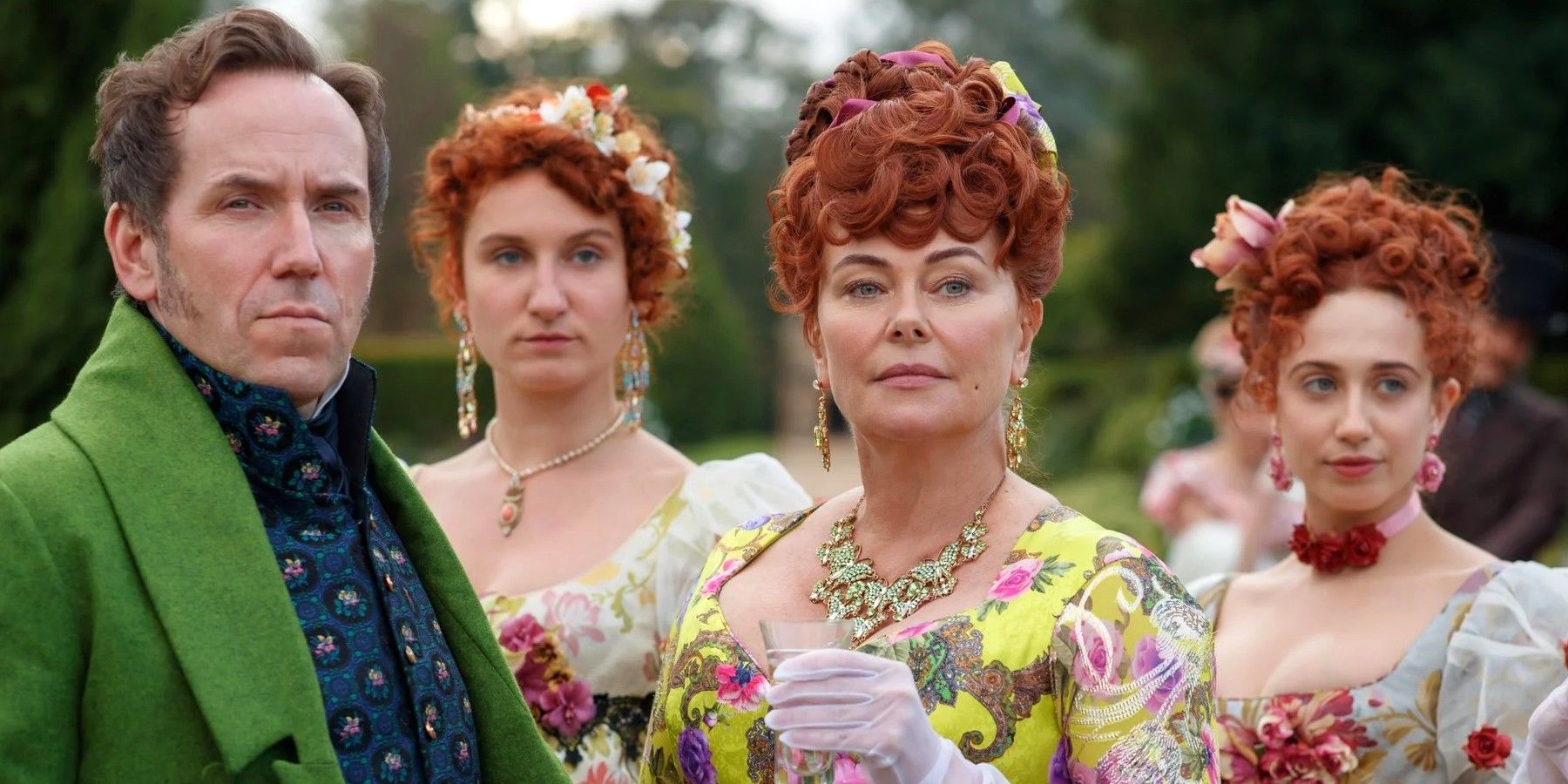

The family’s color palate is at odds with the other members of high society…
The Featherington’s love of bracingly bright colors is played for laughs throughout the series, but the implications of their gaudy wardrobe go far beyond their questionable style. The family’s color palate is at odds with the other members of high society, serving as a visual indicator of their outsider status within their upper-class community. The Featherington’s social awkwardness is highlighted throughout Bridgerton season 1, when the family’s three girls struggle to find matches and the ostracized family is embarrassingly forced to leave the Queen’s luncheon after finding themselves at the center of a scandal.
The Feathering’s disparate style may also reflect the peacocking of its patriarch, whom the audience learns is overwhelmed by insurmountable debt despite his attempts to show the world otherwise. Ultimately, the bright colors distract from the family’s bleaker reality, one that includes relatively little opportunity for their dowery-less daughters. Later in the season, there are several moments in which Lady Featherington bemoans her inability to acquire new dresses for her girls, perhaps a metaphor for her desperation to hide the truth behind a colorful facade.
Why Daphne Always Wears White
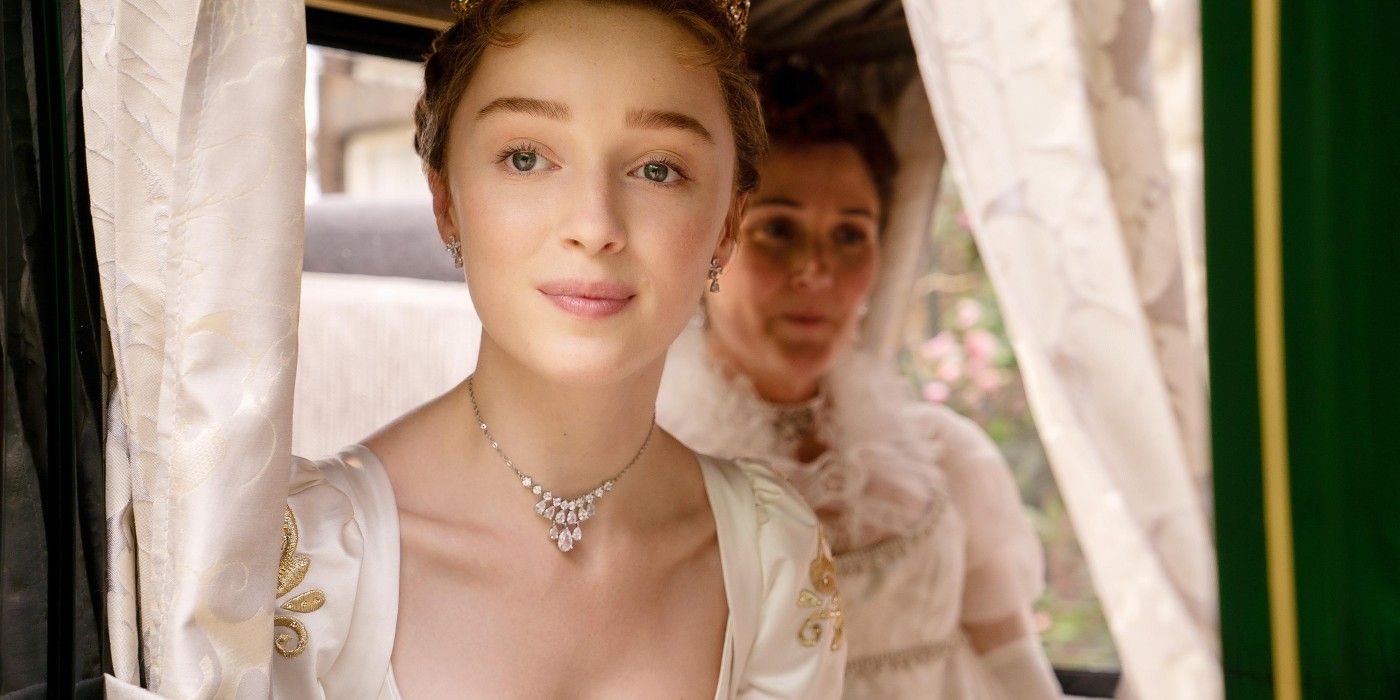
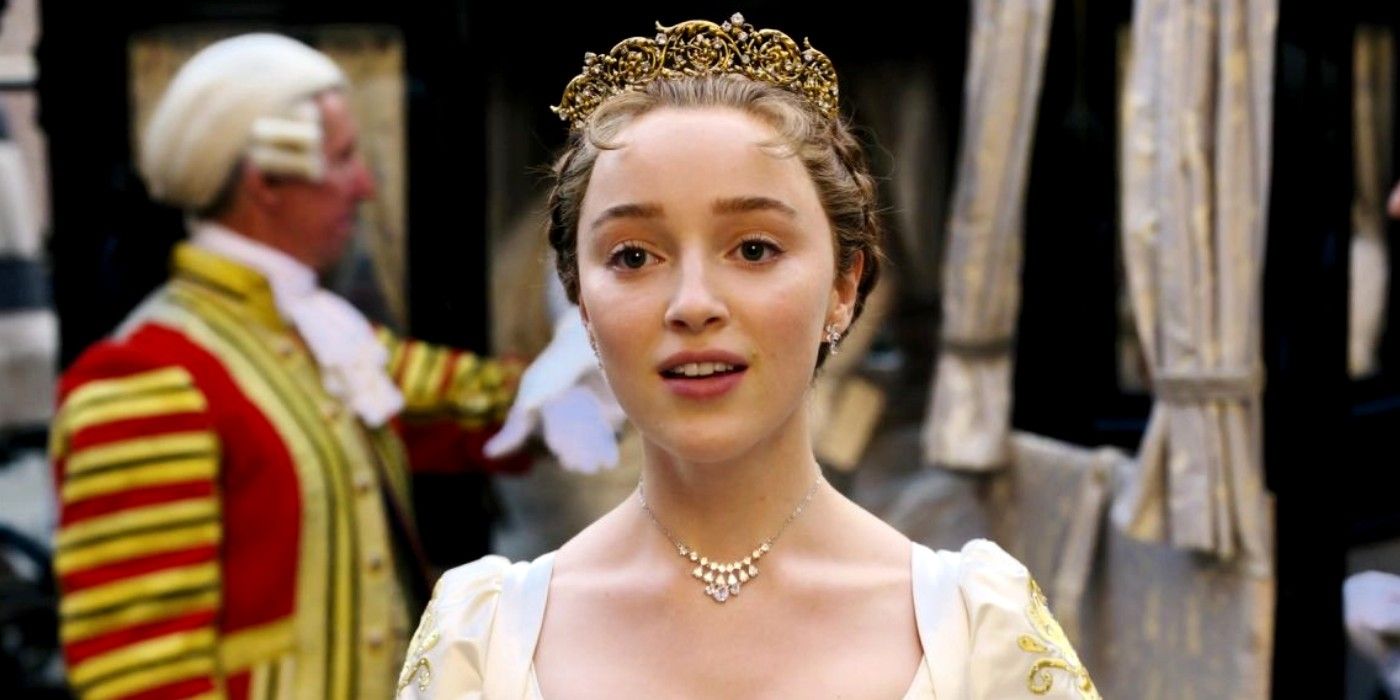
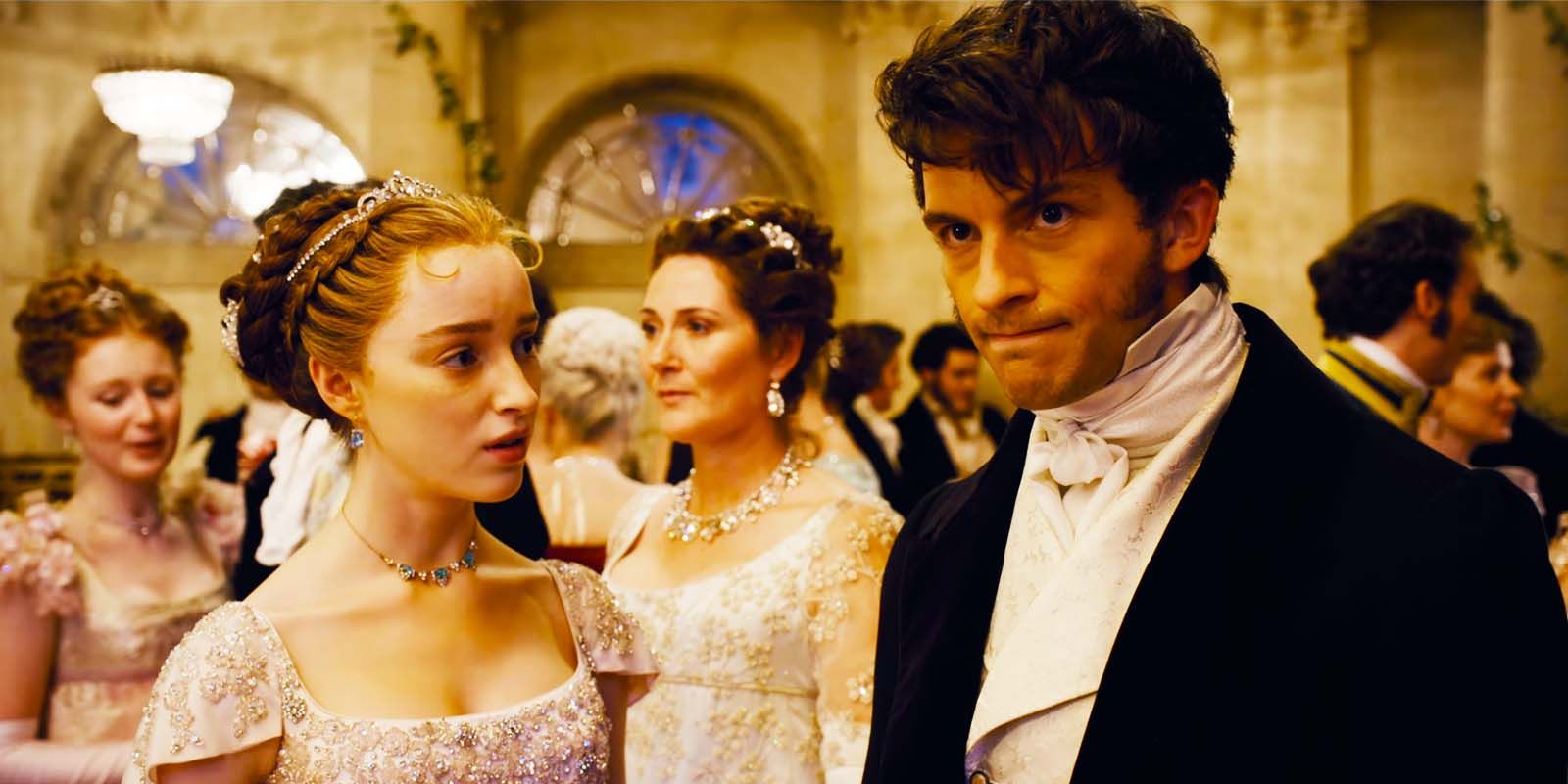
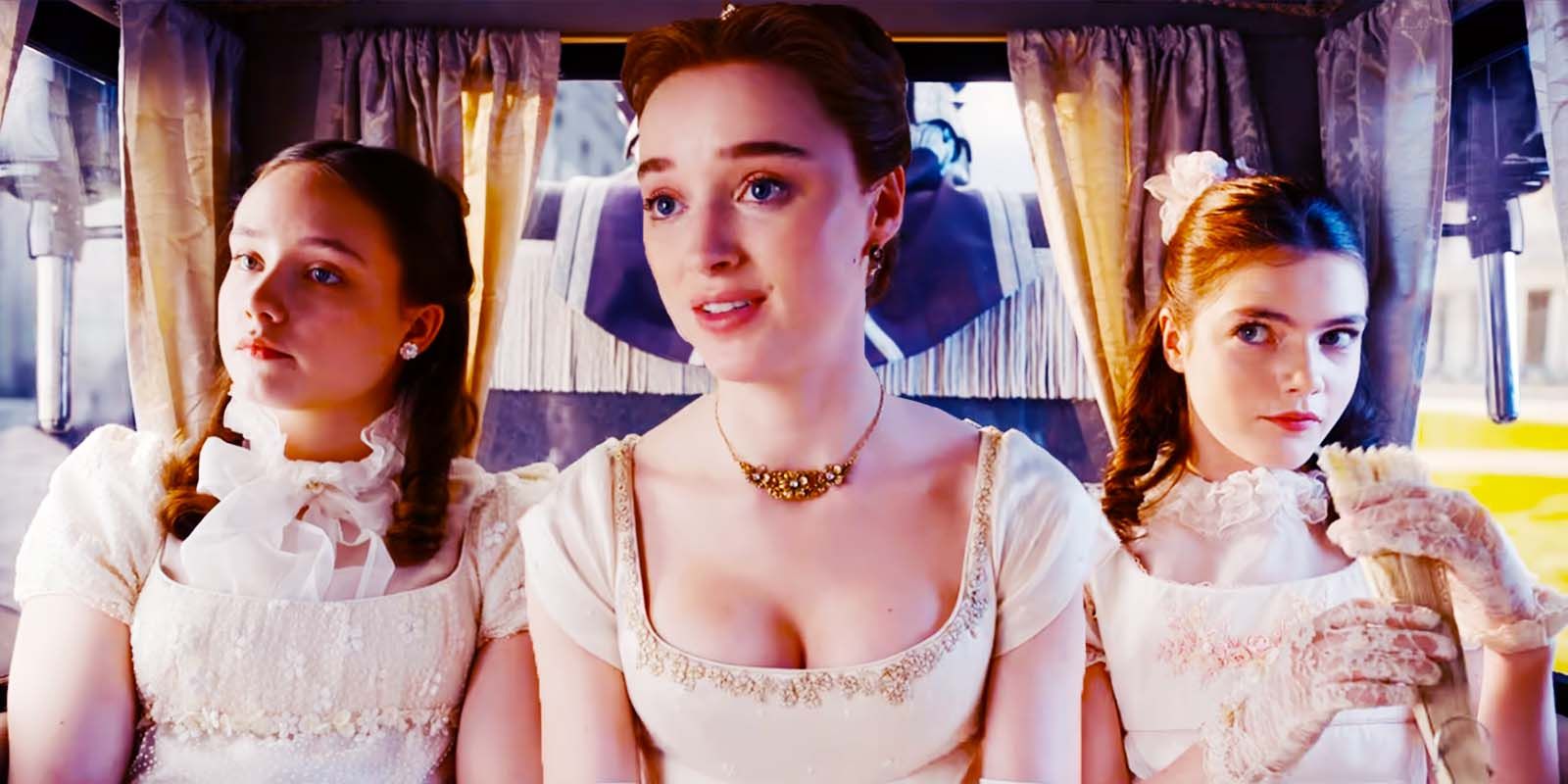
Throughout Bridgerton season 1, Daphne is often seen wearing white (or other light colors, like baby blue or beige in addition to the Bridgerton blue). The future duchess is often shown in close proximity to white roses, as well, further linking her to the color. Regency color tastes considered white to be a perennial favorite. Therefore it is fitting that the noted “incomparable” would be dressed to the height of fashion. Additionally, white could be a somewhat on-the-nose reference to Daphne’s deeply-rooted desire for marriage and idyllic family life.
Of course, white may also reflect Daphne’s purity and innocence. With each passing episode, it becomes increasingly clear as to just how little the eldest Bridgerton girl has been informed in the matters of sex, forcing her to make some rather shocking discoveries on her own. Though extraordinarily bold and determined to use her voice in a world that often fails to listen to her, the general color palette – subdued, calming, and traditional – tells the audience that Daphne is unquestioningly good and a heroine worth rooting for.
As the first season progresses, there are more notes of purple in her wardrobe. That denotes the change in her character as she grows closer to Simon. Simon’s signature color of crimson red is mixed with the Bridgerton blue to create those purple shades.
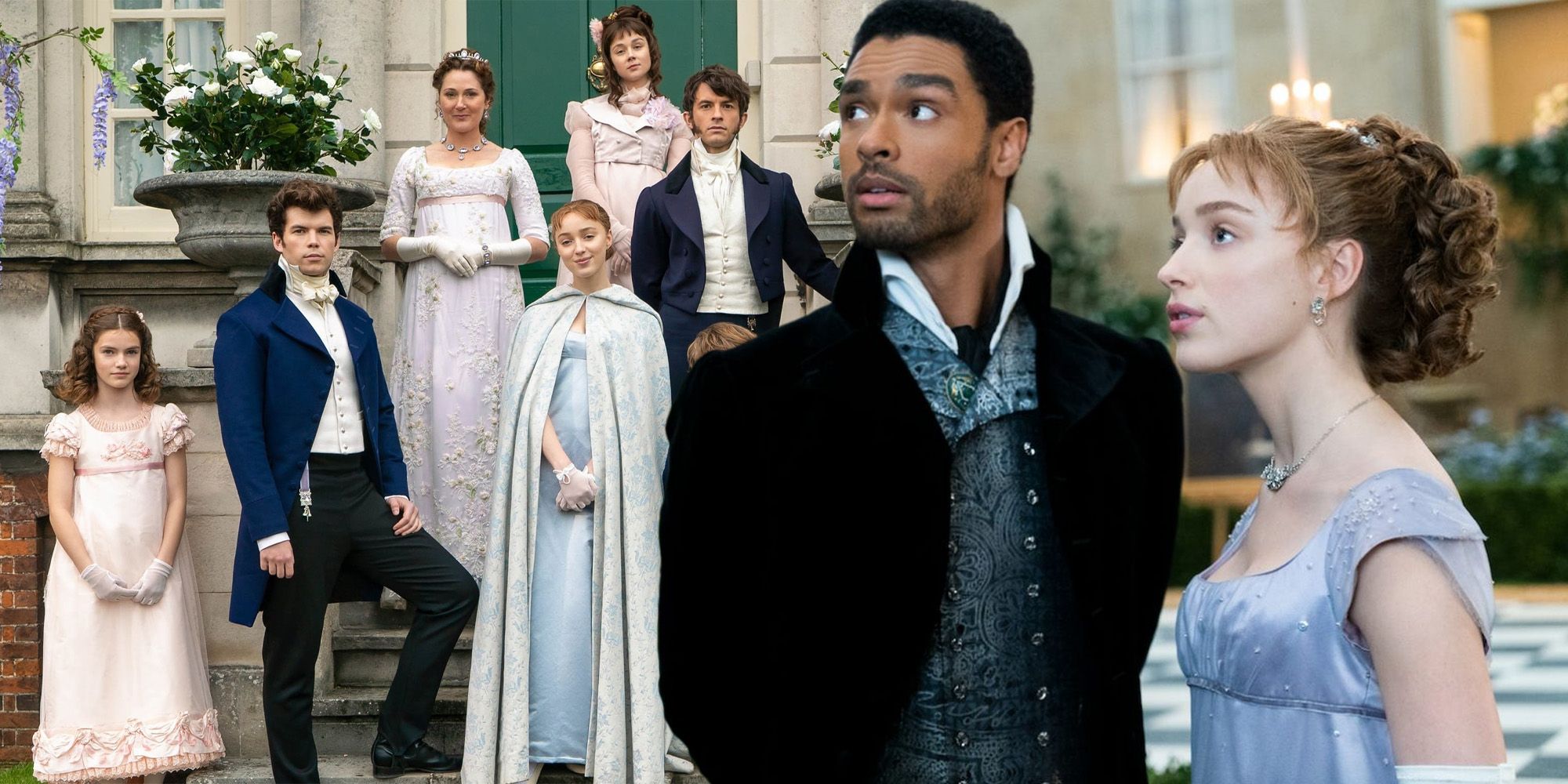
Why Simon Starts Wearing Colors
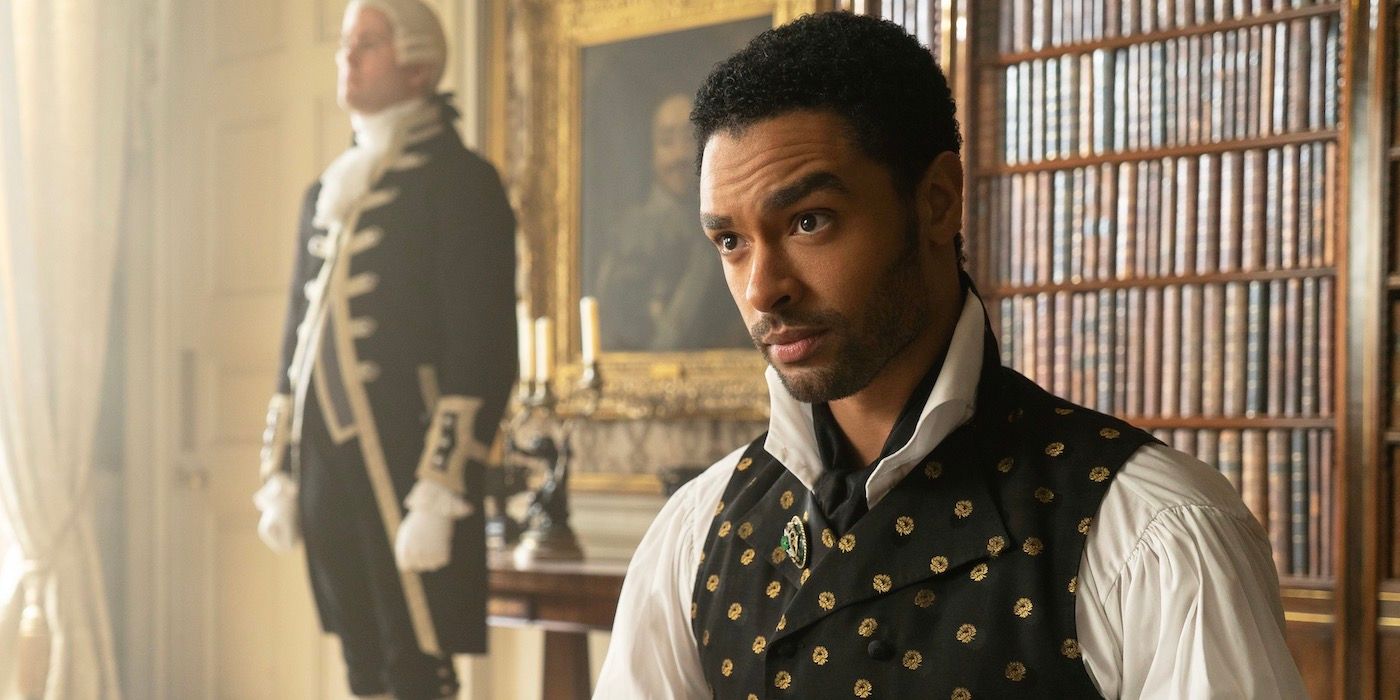
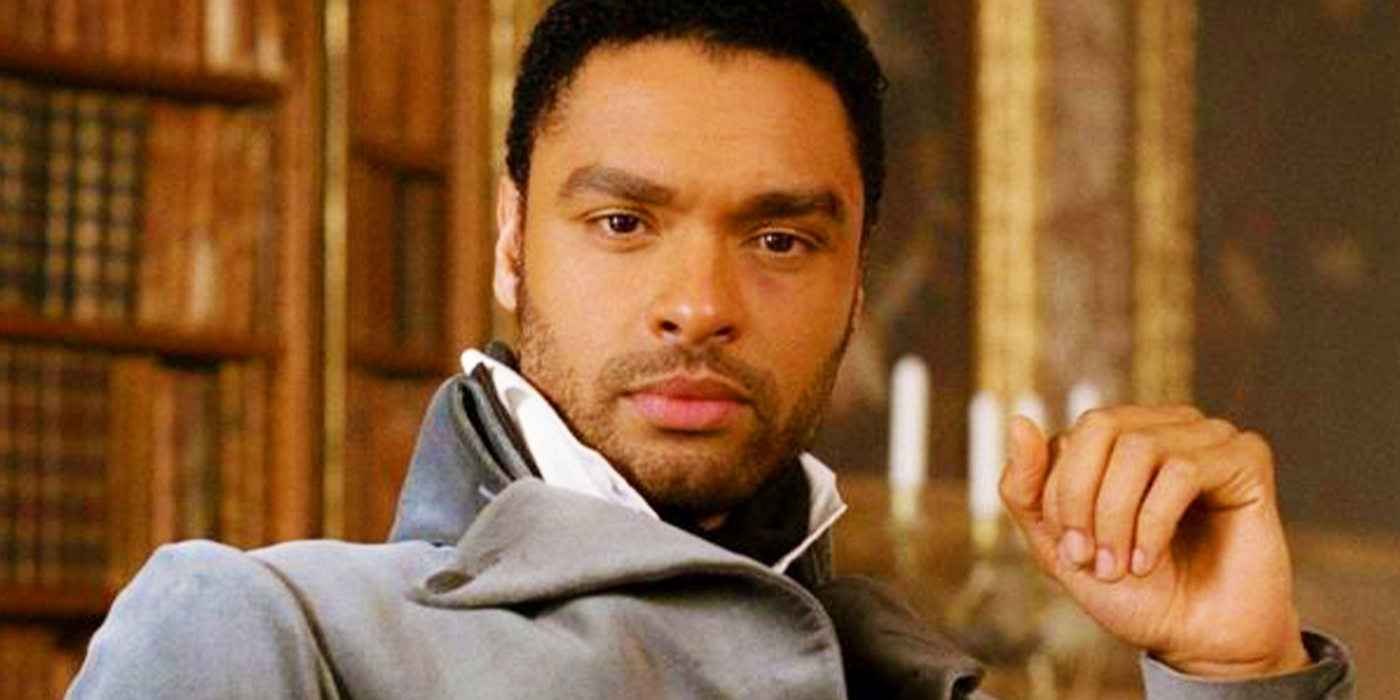
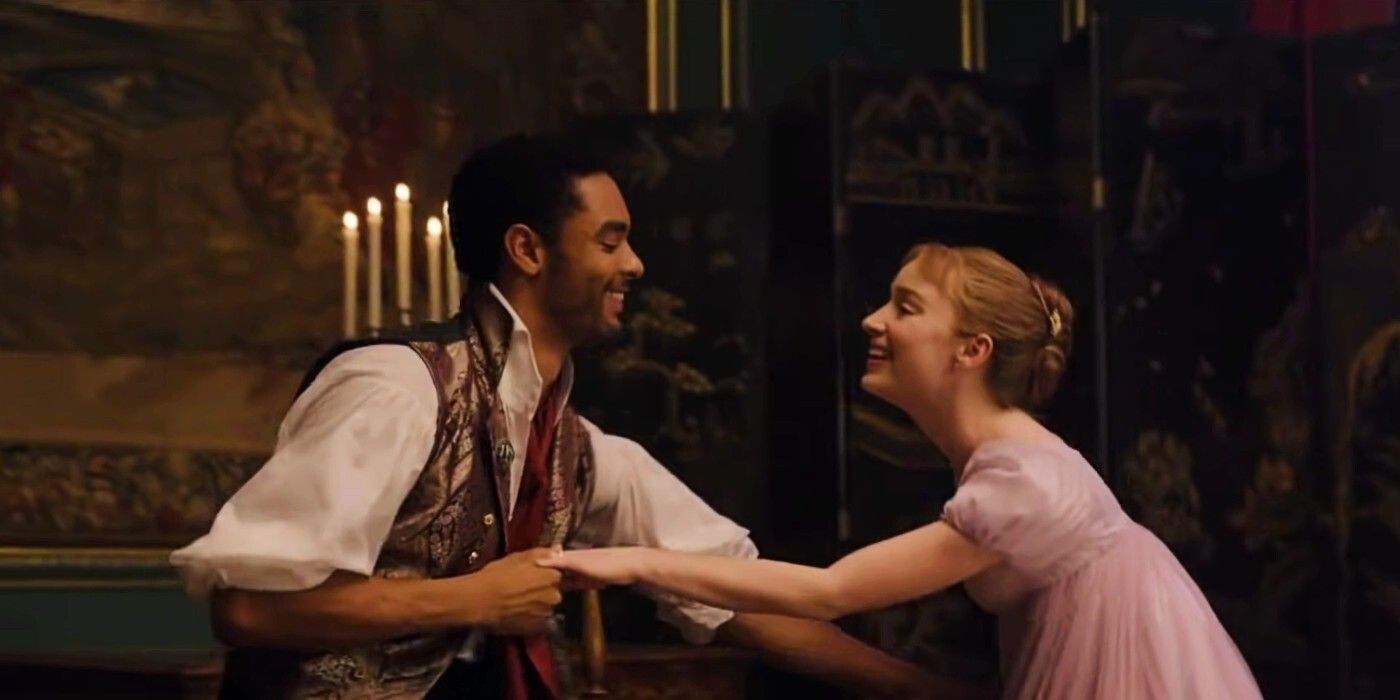
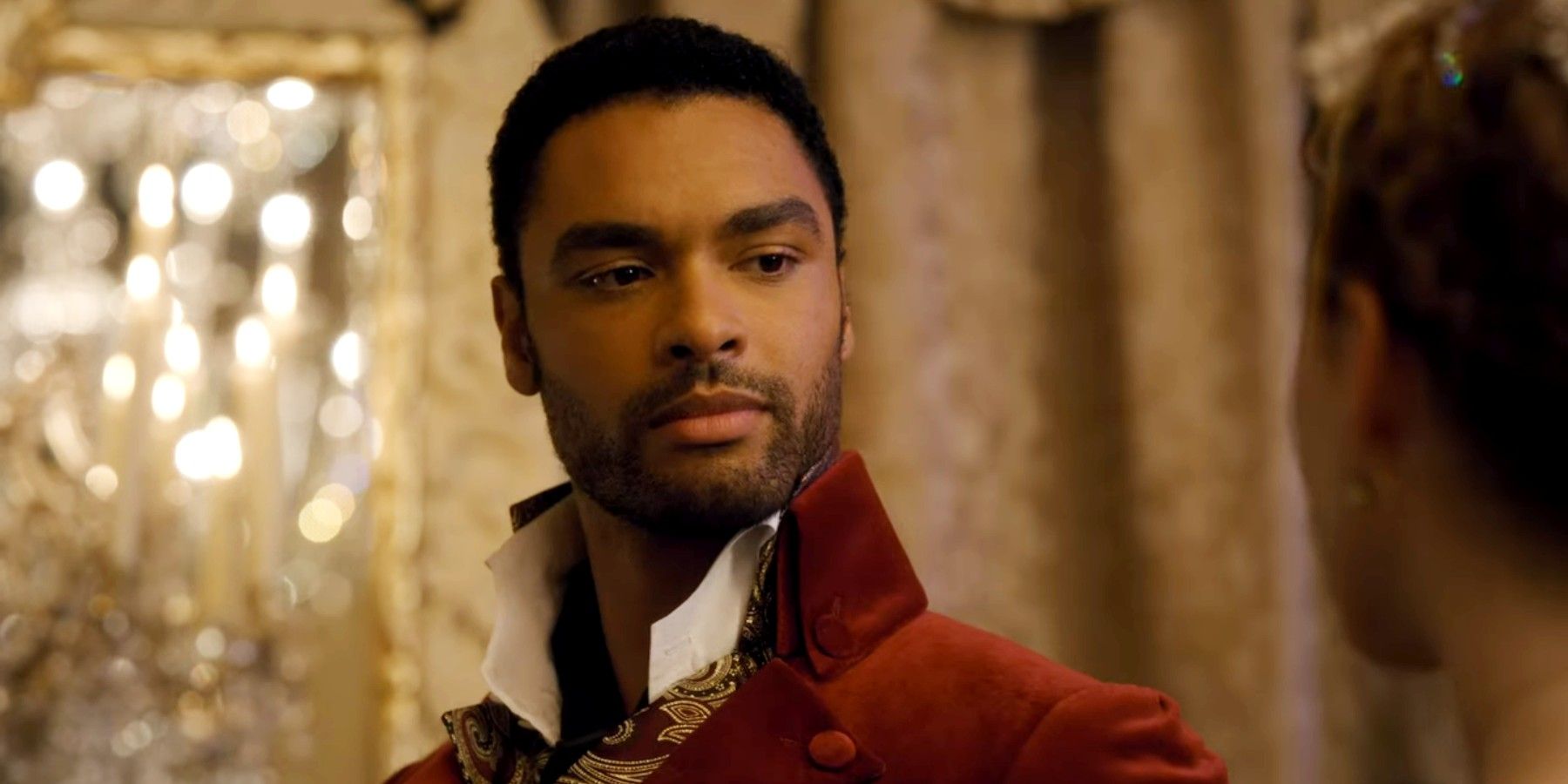
Symbolic for passion and love, red is an apt choice for the duke…
In episode 2 “Shock and Delight,” Lady Danbury scoffs at Simon’s drab attire in one of Bridgerton‘s driest line-readings, saying, “Would it pain you to wear some color, your Grace? The London season is already terribly monotonous as it is.” Indeed, the Duke’s first appearances show him in outfits consisting largely of black, symbolic of his dark and troubled past. Considering Simon’s history with his emotionally abusive and neglectful father, his choice of drearier and understated wardrobe is certainly understandable.
However, Simon’s wardrobe subtly begins to evolve as the season progresses, primarily by incorporating the color red. Symbolic for passion and love, red is an apt choice for the duke – especially as his bond with Daphne strengthens. The Bridgerton costumers use the color to help symbolize Simon’s gradual softening at key moments in his development.
On the night in which the duke and Daphne first kiss in the garden, he is wearing an uncharacteristically flashy crimson jacket (he adorns it at other moments of happiness and marital bliss, as well). Also, notably, a red ascot is worn when Simon finally articulates his feelings for Daphne when appealing to the queen and again on the couple’s wedding night.
Why Lady Featherington Doesn’t Wear Black At Bridgerton Season 1’s End
Lady Featherington may subdue her look slightly in the wake of her husband’s death, but her unwillingness to wear black – as decorum would suggest – is actually rather fitting for her character. In truth, Lady Featherington, who told Marina that her marriage was a loveless one, didn’t truly mourn her husband.
In addition to their relationship not being a “love match,” Featherington’s gambling and deception placed a real strain on both their marriage and their family’s position in society. It is likely that Lady Featherington’s final olive green dress (and accompanying pink-jeweled necklace) is a sort of sartorial defiance in response to her husband’s ultimate failures. She goes back to her bright colors in season 2.
How The Costume Colors Play A Part In Bridgerton Season 2
While the Featheringtons and Bridgertons continue to wear their signature color pallets in the second season of Bridgerton, new characters in the show introduced new costumes. That’s particularly true of the Sharma family.
Edwina Sharma is often seen in light colors that match the overall aesthetic of the rest of the ton, unlike the Featheringtons. Interestingly, however, she is most often in pink and white. Like Daphne in the first season, the light colors help to drive home that she’s a naive character. Edwina doesn’t know the full extent of why Kate wants to help secure her sister a wealthy husband, after all. The pink is also a nod to Edwina as a sweet and romantic young woman.
Edwina’s older sister Kate, on the other hand, most often wears jewel tones of purples, teals, and blues. She is free to stand out in the ton because she’s seen as a spinster, but the deep colors of her wardrobe also reflect the dyes used in garments in India, allowing her to showcase pride in her heritage.
What’s most interesting about Kate’s wardrobe, however, is that in particular scenes opposite Anthony Bridgerton, even before the two are willing to admit their feelings for one another, some of her wardrobe will match his. This is especially true as the season progresses and their feelings for one another grow. Anthony even begins wearing a coat with purple in it to match Kate, moving away from “Bridgerton blue.” It’s a subtle indicator that Anthony and Edwina are not a match, but that he and Kate are.
The incredibly diverse clothing styles of Bridgerton’s cast are both intentional and gorgeously executed (even some of the more gaudy examples manage to hint at crucial character traits and development). For a story as laced with melodrama and romanticism as this one, there isn’t a stitch of bold costuming out of place.





